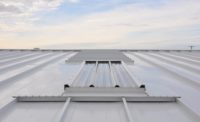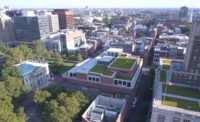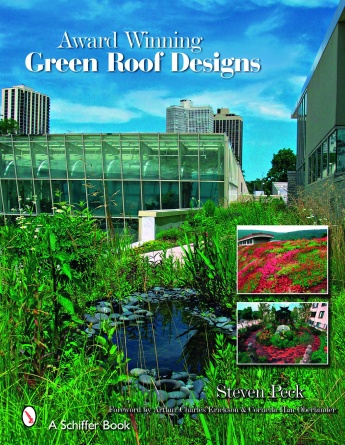Honolulu Roofing Company (HRC) recently completed the installation of a sustainable green roof at Turtle Bay Resort on Oahu’s North Shore. According to HRC Vice President Dan Jaeger, the green roofing project covered approximately 60,000 square feet of the hotel’s lower flat roof areas and included a landscape mix of river rock and mostly Hawaiian native seashore plant gardens. “The combination of the project size, its intricate design, sustainable elements, and the sensitivity to provide a serene and inspiring view for the resort’s hotel guests make this project unique in comparison to other resorts in Hawaii and around the world,” he said. Segments of the project installation included demo/removal work, new single-ply and skylight installations, as well as landscape design work and installation of the green roofs and rocks.
Scott McCormack, vice president of real estate for Replay Resorts and Turtle Bay Resort, said, “With the recent installation of the solar PV system atop the 450-room Turtle Bay Hotel, these conservation projects complement our efforts to be more ‘green’ with our operations, as we fulfill our vision for a more sustainable future of Turtle Bay Resort while contributing to the state’s goal of reaching 70 percent energy independence by 2030.”
Turtle Bay Resort initiated the green roof project to replace its outdated roof membrane, improve its energy efficiency and reduce greenhouse gas emissions while also enhancing guest room views. The green roof materials included a layout design of river rocks in various colors and shapes. Native Hawaiian plants include Nehe (vine) and Akulikuli (short succulent grass). Other low-maintenance plants used are Carex (longer, bright green grass) and Sedum (a hardy flowering plant). Two herb gardens, 6 by 18 feet, were also planted near the roof elevator areas that provide fresh local herbs and produce used by the hotel’s restaurants as part of the resort’s farm-to-table emphasis. A plant irrigation system tied to moisture meters was also installed to conserve water. The new design on the lower roofs was a collaboration of Division Seven Consulting of Hawaii Inc., landscape architect Walters Kimura Motoda Inc. and architect Robert Alexander Lazo. In addition, Hui Ku Maoli Ola also contributed to some of the vegetative and rock garden design.
Commercial Roofing & Waterproofing Inc. (CRW) was named the general contractor, and its vice president, Larry Young, oversaw the project since work began in August 2013. The project’s first task was to remove three layers of roofs that were installed one on top of the other. The existing layers included two layers of BUR with red cinder rock and over 8 inches of spray foam roofing. The existing red cinder rock roofing needed to be removed in reusable condition so the owners could utilize it in other areas of the resort. In addition, there was approximately 50 yards of dirt 3 feet deep that was removed discretely in 5-gallon buckets with no disruption or trace on the premises. HRC discovered rusted metal under the original roof that that was also replaced with a new solid substrate metal decking. According to Jaeger, the entire removal process spanned over six months.
Jaeger said that Firestone roofing products were selected because of their functionality, excellent performance track record and guaranteed long-term warranty. The finished product also provides an aesthetically pleasing view to enhance the hotel guest experience while maintaining a natural ambience that blends with the surrounding area. The roofing products used at Turtle Bay Resort included Firestone Single-Ply TPO Membrane, Water-Based Single-Ply Bonding Adhesive, 5/8-inch DensDeck Prime, I.S.O. Stick Insulation Adhesive, Tapered Insulation, V-Force Vapor Barrier and V-Force Water-Based Primer applied over the existing lightweight concrete. The completed roof system was topped with Firestone’s SkyScape Low Profile Multilayer green roofing system. Firestone UC-3 standing seam metal roof panels were also installed on the adjacent lower roof decks.
The landscaped river rock roof used approximately 500 tons of rocks to fill the design of the green roof. The rocks were specified to meet rooftop wind ratings. The loading process took approximately 90 days to complete using a HRC 10-man crew. One pallet at a time was delivered to the loading site and then hand carried up to the roofs.
During the project, 400 Firestone standing seam roof panels were carefully installed by hand, using three HRC crew per panel. The standing seam roofs can now be found covering both the resort’s spa and the Pa`akai Restaurant.
“This is the largest and most unique green roof project that HRC has been involved with in the hospitality industry. The results are outstanding, and we are very pleased with the design ingenuity and our ability to accommodate and respect the hotel’s need for our crews to be non-disruptive,” said Jaeger.
For more information, visit www.honroof.com.






